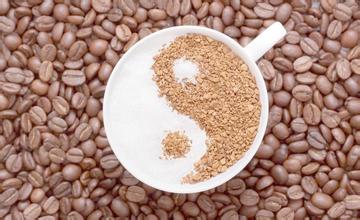Introduction of varieties and brands with flavor and taste characteristics in Ethiopian coffee manor with rich alcohol thickness
Coffee is Ethiopia's most important export cash crop and the main source of Ethiopia's foreign exchange earnings. Ethiopia's coffee exports account for about 3% of the world market, making it the eighth largest coffee exporter in the world. Coffee exports increased steadily from 58000 tons in 1990 to 110000 tons in 1995-1996 and remained at this level in the following years. The export volume exceeded 110000 tons from 2001 to 2002 and reached 127000 tons from 2002 to 2003. As the price of coffee on the international market has been declining for a decade, Ethiopia's foreign exchange earnings have been seriously affected. Before the sharp drop in coffee prices, coffee exports accounted for more than half of Ethiopia's foreign exchange earnings, but now they account for only about 35 per cent. But according to the International Coffee Organization, coffee prices rebounded in 2002, rising from 41 cents per pound in September 2001 to 52 cents per pound in 2002 and 59.7 cents per pound in 2003. The average price in March 2004 was 60.8 cents per pound, an increase of 50% over September 2001. This is excellent news for Ethiopia.
Ethiopian people are addicted to coffee. In 2003, domestic consumption accounted for 42.3% of the total output, with a per capita consumption of 3 kg. But more than half of the coffee produced each year is used for export to earn foreign exchange. The main exporters include the United States, Italy, the United Kingdom, Sweden, Norway, Greece, France, Belgium, Germany and Australia.
Before 1974, the right to produce, process and trade coffee was in private hands. During the military administration, private farms were nationalized and smallholder coffee producers were snubbed. In 1991, the Ethiopian Transitional Government issued a new economic policy to encourage private businessmen to export coffee. As a result, the number of private coffee exporters has increased sharply. Nearly 90% of coffee exports are now in the hands of private exporters.
The characteristics of Ethiopian coffee
The natural characteristics of coffee beans include size, shape, acidity, texture, taste and aroma. Essel's coffee beans are small, fragrant and sour like wine, and are loved by coffee lovers. Because of its unique aroma and taste, Ethiopian coffee is often used in the production and variety improvement of beverages, ice cream and candies.
The world-famous Ethiopian coffee is mainly:
1. Limu coffee grows between 1400 meters and 2000 meters above sea level. Wash the coffee. Excellent quality, with strong nut aromas, suitable acidity, with the intensity of wine. The annual output is 29000 tons.
2. Jima Coffee grows between 1400 and 1800 meters above sea level. Sun-baked coffee. Slightly sour, with nutty aromas and a long finish. The annual output is 70000 tons.
3. Gambi coffee grows between 1500 meters and 2300 meters above sea level. It is gourmet coffee with moderate acidity and fruity aroma. The annual output is 34000 tons.
4. Yerqin coffee grows from 1500 meters to 2200 meters above sea level. Mocha flavor, with floral and spicy aromas. The average annual output is about 28000 tons.
5. Sidamo Coffee grows at an altitude of 1400-2200 meters. Suitable acidity and high quality. The average annual output is about 37000 tons.
6. Harald Coffee grows on highlands above 2700 meters above sea level. It is the best coffee in the world, medium acidity, intoxicating exotic flavor, with slightly tipsy, dried fruit aroma, is pure mocha coffee. After the average annual output is about 26000 tons, the next step is to crush the coffee beans. The hostess withdrew the iron plate to the outside of the stove, cooled slightly, poured the roasted coffee beans into an iron mortar about 30 centimeters high, similar to our processed traditional Chinese medicine, and hammered the beans into coffee powder with an iron pestle. This action is not as simple as it seems. One hand should be held on the iron mortar below, and the other hand should be raised high, because only by holding it high can one be able to do so. To force the iron pestle accurately into the small mouth of the iron mortar, inexperienced people will only hit their own hands. I have also asked curiously, why not grind coffee in an iron mill or a coffee machine? The host told me that if grinding with a machine, the high-speed friction between coffee beans and metal brings a lot of impurities on the iron, which will affect the pure flavor of the coffee after processing.
After the coffee powder is made, the hostess carries the clay plate containing the coffee powder and sends it to the guests attending the ceremony in turn, so that everyone can smell the incense. Next, pour the Chung-ho coffee powder into a clay high-necked coffee pot, add water and boil it on a charcoal stove. on the high neck of the coffee pot, there is a special cork shaped like a wooden top played by children, but a bit like a shoddy one. The function of cork is to keep warm, because the local elevation is more than 2500 meters, the boiling temperature of coffee liquid is low, and the kettle is open, which is not conducive to keeping the temperature; second, it is boiling coffee.
Steam can be easily flushed out of the cracks in the cork. Since they are all made of natural materials, the coffee brewed is naturally more fragrant.
While brewing coffee, there is a porcelain fumigation on the side, which contains a white powder. Only after inquiry did I know that this is a material called mo4 medicine in a traditional Chinese medicine store. After the porcelain fumigation is heated, there is a curl of aroma coming out, which is mixed with the strong aroma of the coffee pot and spreads in the room, creating a unique atmosphere. The locals proudly told me that only coffee drunk in this atmosphere can be regarded as authentic Ethiopian coffee.

Important Notice :
前街咖啡 FrontStreet Coffee has moved to new addredd:
FrontStreet Coffee Address: 315,Donghua East Road,GuangZhou
Tel:020 38364473
- Prev

Taste mild Nicaraguan coffee taste manor characteristics of Tianyi Manor introduction
When tasting Nicaraguan coffee, it is best to drink cold water first, so that you can better feel its mellow taste. Drink coffee while it is hot, because the tannins in Nicaraguan coffee are easy to change during cooling, and the taste becomes sour, which will affect the flavor of the coffee. You can add the right amount of sugar, and then add cream. Enjoy a cup of high quality Niga
- Next

Introduction to the characteristics of the flavor and taste manor in the coffee producing area of Xidamo Shaqisuo, which is longer in Huigan.
Gima, which accounts for about 50 per cent of Ethiopia's annual output, grows between 4400 and 6000 feet above sea level in the country's southwestern highlands (the border between Kaffa and Illubabor provinces) and is usually exported to G5/G4. However, in recent years, about 10% or 20% of Gima has been used to make up for the lack of taste of coffee, but its quality has gradually declined to its own level, but for the purchase of
Related
- Does Rose Summer choose Blue, Green or Red? Detailed explanation of Rose Summer Coffee plots and Classification in Panamanian Jade Manor
- What is the difference between the origin, producing area, processing plant, cooperative and manor of coffee beans?
- How fine does the espresso powder fit? how to grind the espresso?
- Sca coffee roasting degree color card coffee roasting degree 8 roasting color values what do you mean?
- The practice of lattes: how to make lattes at home
- Introduction to Indonesian Fine Coffee beans-- Java Coffee producing area of Indonesian Arabica Coffee
- How much will the flavor of light and medium roasted rose summer be expressed? What baking level is rose summer suitable for?
- Introduction to the characteristics of washing, sun-drying or wet-planing coffee commonly used in Mantenin, Indonesia
- Price characteristics of Arabica Coffee Bean Starbucks introduction to Manning Coffee Bean Taste producing area Variety Manor
- What is the authentic Yega flavor? What are the flavor characteristics of the really excellent Yejasuffi coffee beans?

